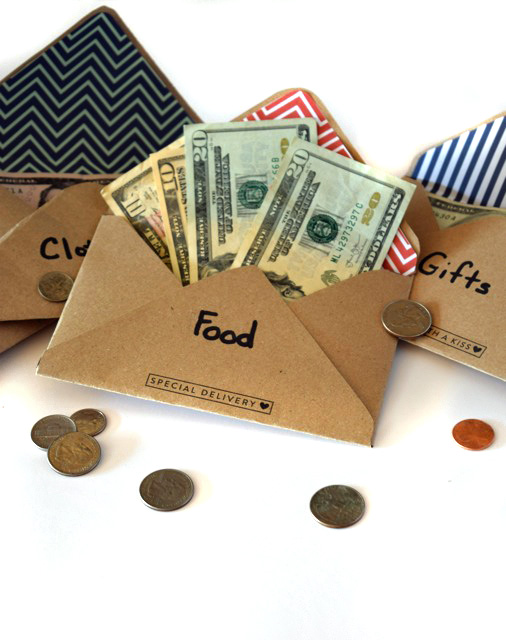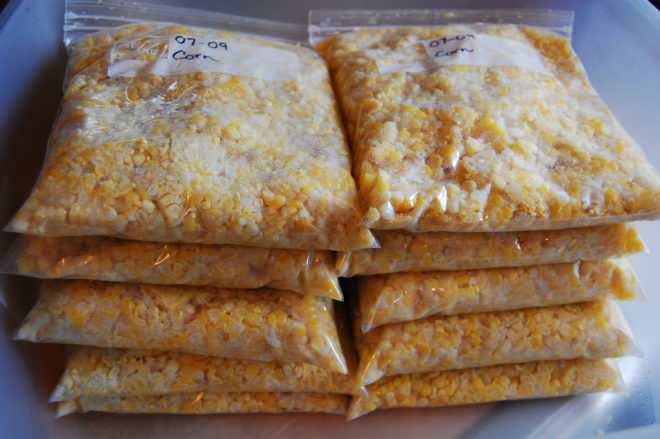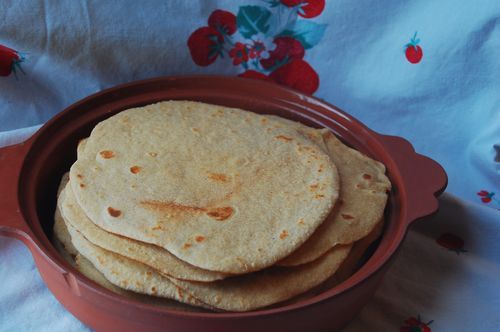
With the Grocery Shrink method, we recommend families work their food budget down to $100 per person per month or $400 for the average 4 person family. (For updated budget recommendations–read here) We don’t use a lot of coupons but focus on savvy shopping and using what we have. Fruits and vegetables are a definite must, as are whole grains, and naturally raised meats. If baking your own breads and pitas and cooking without boxed mixes feels overwhelming, we will show you how easy and delicious it can be!
I have 6 children, aged 18-6. We’ve been home schoolers, private schoolers, public schoolers and at times a combo of each. I’ve been a stay at home mom, worked outside the home, and currently work from home. I understand how busy life is and currently have a $650 food budget for our family of 8. I’ve met lots of frugal mama’s in the internet world and firmly believe anyone can do what I do. Here are 10 basic tips to give you a head start on your grocery slashing journey:
1. Switch over to cash only for groceries. Decide what you can afford to spend every month and put that amount in cash in an envelope. When the cash is gone, you are done shopping until next month. Studies show using cash reduces spending by 30%! And you will always know when you are near the end of your budget. I keep my cash in a couon organizer like tihs one, a sewing pattern available on etsy from isew. This allows me to easily get money from several budget categories in one store.

2. Inventory what you have on hand. You may have a little or a lot, but it’s important to use up what you have before it goes bad.
3. Look at the Grocery Ads and evaluate what the good deals are. Just because it’s in the ad doesn’t mean it’s a good deal. Just because it’s a good deal for that item, doesn’t mean you should buy it. For example, I’ve seen a local chain advertise a “low price guarantee” on an item and noticed that the same item was less expensive a few weeks ago. It was the lowest price in the area for that day, but another day you will find a much better price. Buy as much as you can afford of the items that are their lowest price ever. Aim for 6 months worth of non-perishable food in your pantry.
Also consider that while frozen hash brown potatoes will go on sale for $1 for a 2 lb bag but real fresh potatoes will go on sale for $1 for 10lbs. Fresh potatoes are a much better deal and healthier too.
4. Before hitting the stores, check www.becentsable.net and see if there are any coupons available to match with the sale items you are planning to purchase. They will tell you what coupons match up with the sales and where to find the coupon in your paper or where to print it online.

5. Make a meal plan centered on what you have on hand and incorporate the sale items. Plan to store extra sale items in your pantry or freezer to use later on in the year. Click here for detailed instructions on how to make a meal plan and printable sheets to write your plan on.
6. Learn to make something new from scratch to save money and improve health. You can make yogurt in your crock-pot. Sprouts take 1 minute a day to grow and are ready to eat in just 3 days! You can make 100% whole wheat bread at home that is soft, sliceable and with a fine crumb. Try homemade tortillas, granola, or pitas. You can always go back to buying them, but you may find you prefer your own.
7. Make the foods you used to enjoy in a restaurant, at home. Pizza, grilled stuffed burritos, Fettuccini Alfredo, spinach queso, submarine sandwiches. . . you name it, you can make it.
8. Pack leftovers for the working spouse’s lunch. Taking a lunch instead of buying it saves about $2,000 a year! I pack my husband’s lunch before serving the meal. That way I am guaranteed to have enough for him.
9. Take food with you when you run errands. Then eat your picnic lunch instead of stopping for fast food. Look how easy it is!
10. Reevaluate your necessities. Toilet paper, sanitary napkins, diapers, baby wipes, paper towels, dinner napkins, and paper plates all have washable, reusable counterparts. If you don’t sew, old t-shirts cut into squares do not require a hem since they don’t ravel. They are super soft and make great washable toilet wipes or face tissues. Homemade cleaning supplies are inexpensive, effective and environmentally friendly.
10a. Also think about the foods we buy that are treats, things like ice cream, cookies, cakes, crackers, soda, chips, and juice. While these items do not contribute to our health, it’s okay to have them for a rare treat once in a while. The average American family spends enough on these types of foods each year that they could take a family vacation on a Caribbean cruise ship just by forgoing the pleasure and saving the money they would have spent in a trip fund! It’s amazing what can be saved just by letting rare treats be rare treats.
P.S. It’s easy to overlook what food you can grow at home. We have a small yard in the city but found space in our flower beds for organic herbs and vegetables. It’s fun to step out the door and gather fresh organic food to serve immediately. If you can grow enough, canning and freezing fresh produce for winter use is easier than it sounds. My favorite resource is the Ball Blue Book.

If you’d like to learn more and get personal help with your grocery budget, come join our Grocery Shrink Live course.



Pingback: Monthly Goals Inspiration // May 2017 Goals // April Recap // Belle Brita